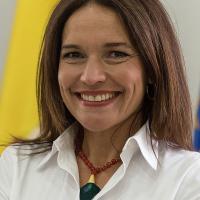A Science|Business closed-door expert roundtable, in partnership with Elsevier (10:00-13:00 CET), followed by a networking lunch
On July 16, the European Commission unveiled its first proposals for the 2028–2034 Multiannual Financial Framework, reaffirming the importance of research and innovation (R&I) as a cornerstone of Europe’s strategic agenda. With Horizon Europe set to continue as a standalone programme - closely linked to the new Competitiveness Fund - and a proposed budget increase to €175 billion, the Commission, at least on paper, has delivered against President von der Leyen’s pledge to put “…science and technology, research and innovation, at the heart of our economy”.
So far, so good. Yet with many months of complex negotiations ahead on FP10’s governance, structure and budget, Europe has plenty of immediate issues to address through its R&I policies and programmes – not least competitiveness, security, resilience, and greater autonomy in key technology domains. To that end, investments are flowing into areas such as photonics, semiconductors, advanced materials, AI and quantum. And even if the overall numbers pale in comparison to what the US and China are spending, various established metrics show that Europe remains a world leader in the fundamental research underpinning the speedy evolution of these technologies and others.
With the political ‘direction of travel’ now broadly defined, three important questions arise: first, how can the EU and member-states effectively measure progress towards their desired goals? Second, is there a clear understanding of the ‘changing geography’ of science globally – namely, where countries or regions are out- or underperforming the average in strategic areas, and the factors behind those trends? And third, how will universities – among the most essential drivers of European R&I – contribute to the strategic objectives for the European Research Area (ERA), and how to better capture their impact? Tracking how R&I contributes to key policy and technology areas requires a sophisticated approach to engage in continual monitoring and mechanisms to ensure that outcomes inform future policy decisions. This would encompass not just Europe’s strengths and weaknesses in key scientific and technological domains, but also its human capacities – from people, skills and mobility to industry-academic collaboration and peer-to-peer partnerships with associated countries.
The EU’s legislative work – and in particular the new ERA 2025-2027 agenda, and upcoming ERA Act and Innovation Act – aims to accelerate the development of a fully-functioning single market for R&I and knowledge. In parallel, however, it is vital to understand how Europe is performing today in relation to its key assets: researchers, knowledge, and technology, against the backdrop of a rapidly changing landscape and dynamics of R&I in Europe and beyond. This raises a number of related issues: what are some of the key indicators that could be most helpful to track the contribution of R&I to key EU policy goals? Is ERA the right framework within which to measure performance and progress? How can the future approach ensure added value for all, including Widening and candidate countries plus Horizon Europe’s associated partners? And can policymakers ensure effective synergies between ERA and other major pieces of legislation moving forward?
On December 2, Science|Business will convene a select group of senior figures and experts from across the R&I spectrum to address these topics and more. Drawing on latest scientific data, discussions will focus on the ways in which the EU can practically advance its renewed ambition of free circulation of researchers, knowledge and technologies, and the wider relevance of this to the forthcoming ERA Act before its publication in 2026. The end goal: to help Europe make evidence-based choices to close the global innovation divide, boost its economic resilience, and stand on its own two feet in an increasingly unpredictable world of science and technology.
















Partners


 A unique international forum for public research organisations and companies to connect their external engagement with strategic interests around their R&D system.
A unique international forum for public research organisations and companies to connect their external engagement with strategic interests around their R&D system.